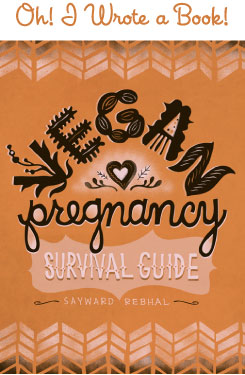A few weeks back I wrote a post about why vegan children don’t visit the zoo, and I offered up one of my favorite zoo alternatives: the Natural History Museum. That post sparked a lot of discussion, with so much insightful input and so many diverse points of view, and it made me incredibly grateful that there is such a special community of people that visit this space. So today I want to share some more of my thoughts around the ethics of keeping captive animals. Oh, and also to talk about another awesome place that vegan kiddos can go to learn about the amazing animal kingdom!

Sanctuaries! Animal sanctuaries provide the same in-person, interactive experience that many folks really miss when they give up going to zoos. At sanctuaries, the animals are there, in your face, and often in your arms (if you’ll let them – they can be pretty cuddly!) The majority of sanctuaries in America are geared towards farm animals, because obviously, those are the ones that need the most rescuing here (over 10 billion individuals killed every year). But many sanctuaries also focus on smaller subsets of animals like exotic birds or reptiles, retired or liberated research primates, or large cats like lions and tigers (which are tragically sold as “pets” and then abandoned when they grow up to be too big and, you now, not actually domesticated).

Sanctuaries give children the opportunity to connect with non-companion animals; to meet them, observe them, and often times even to touch them. But unlike traditional petting zoos which position animals as monetized commodities who exist to serve as tactile entertainment, sanctuaries do not exploit the animals in their care. When it all boils down, the difference is the bottom line.
A traditional zoo or petting zoo is a for-profit institution, whereas sanctuaries are always non-profit organizations. To me, this distinction makes all the difference. Because in any for-profit setting, the money is, unfortunately, the primary motivating factor. Increasing revenue will always take precedence over the interests of the animals, because that is the way the system is designed to work.
Conversely, in non-profit organizations, the welfare of the animals always comes first. Because that is the reason the organization exists!
I think about it like this: a traditional zoo or petting zoo is a place that exists for human entertainment, and animals happen to live there. In contrast, a sanctuary is a place that exists for animals to enjoy their lives in safety, and humans happen to go there.
There is something deeply moving about visiting an animal sanctuary, and it’s something that in my experience, even the children can sense. Personally, I always find myself emotionally affected when I get to spend time with the lucky few who are saved. It’s a confusing mixture of joy – watching them revel in a dust bath or kick their legs at a good tummy rub, knowing that they will never have to hurt again – juxtaposed against the reality of the horrible, heartsickening conditions that their billions of brothers will have to endure.
And sure, that’s an entirely adult response. Certainly the children don’t experience a sanctuary in such complex emotional terms, but I swear that they do get some sense of it, too. In the very best way, the children I witness at sanctuaries seem acutely clued into the preciousness of the place. The magic that’s created when people pledge to put the interests of animals first and foremost, always and forever. That magical feeling is sort of indescribable, so really, you should experience it for yourself.
There are animal sanctuaries literally everywhere – and there’s probably one near you! These organizations operate on limited funds and thus, they don’t really get out there and advertise. But more likely than not, there’s a sanctuary within driving distance from where you live. You can check in with this list for a comprehensive guide to America’s farm animal sanctuaries, or you can try Googling “your city + sanctuary” or “your state + sanctuary” and see what you come up with.
For those with plant-powered kiddos in the southern California area, Waits and I are planning a trip to Animal Acres in early November. We’d love it if you came along! Just shoot me an email over at info@bonzaiaphrodite DOT com

Hope to see you there!
♥ ♥ ♥
-
Rachel
-
http://www.bring-joy.com/ Janae @ Bring-Joy
-
http://windycityvegan.wordpress.com/ Monika {windycityvegan}
-
http://www.imogenmichel.blogspot.com/ Imogen Michel
-
Sarah C.
-
Jim Corcoran
-
Kelly
-
http://jabberwocky-jessica.tumblr.com Jessica
-
katta
-
katta
-
Mélanie
-
Meg M






